Tools Required
SA9132S Lower Control Arm Ball Stud Separator
Removal Procedure
- Raise the vehicle on a hoist with the steering in an unlocked position.
- Remove the left wheel and tire.
- Remove and discard the left lower control arm ball stud cotter pin.
- Loosen (do not remove) the left lower control arm ball stud castle nut, until the top of the castle nut is level with the top of the ball stud.
- For left side of vehicle, use SA9132S (or equivalent) to separate the lower control arm from the knuckle.
- For left side of vehicle, remove the lower control arm ball stud castle nut.
- Remove the left side splash shield.
- For the left side of vehicle, remove the lower control arm-to-cradle fastener.
- For right side of vehicle, remove the front stabilizer shaft-to-lower control arm nut and washer.
- Remove the front stabilizer shaft-to-cradle mounting bracket fasteners.
- Remove the front stabilizer shaft (with left control arm) from the vehicle.
- Remove the left control arm-to-front stabilizer shaft nut and washer from the front stabilizer shaft.
- Remove the left control arm from the front stabilizer shaft.
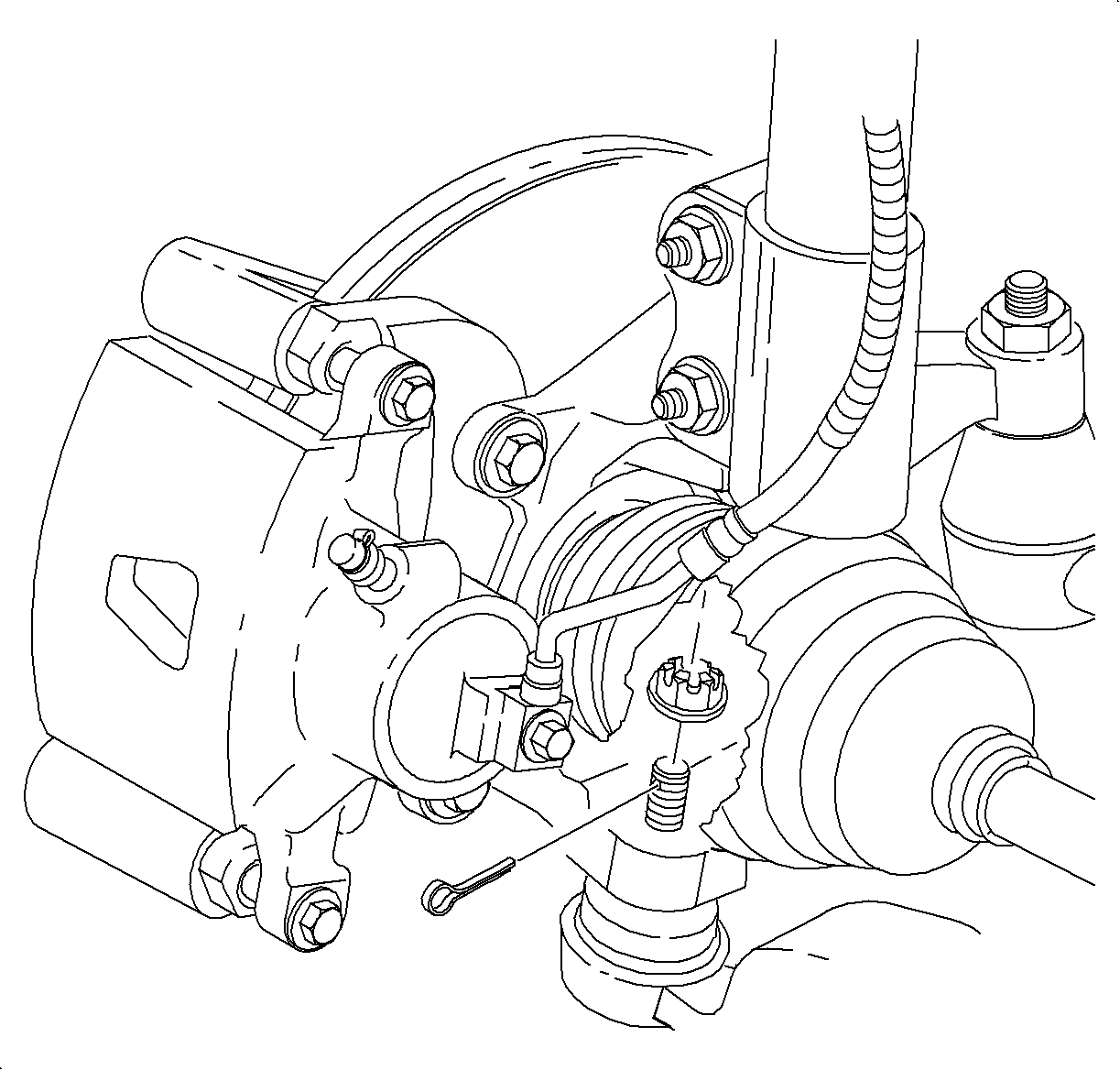
Caution: Ensure that the vehicle is properly supported and squarely positioned. To help avoid personal injury when a vehicle is on a hoist, provide additional support for the vehicle on the opposite end from which the components are being removed.
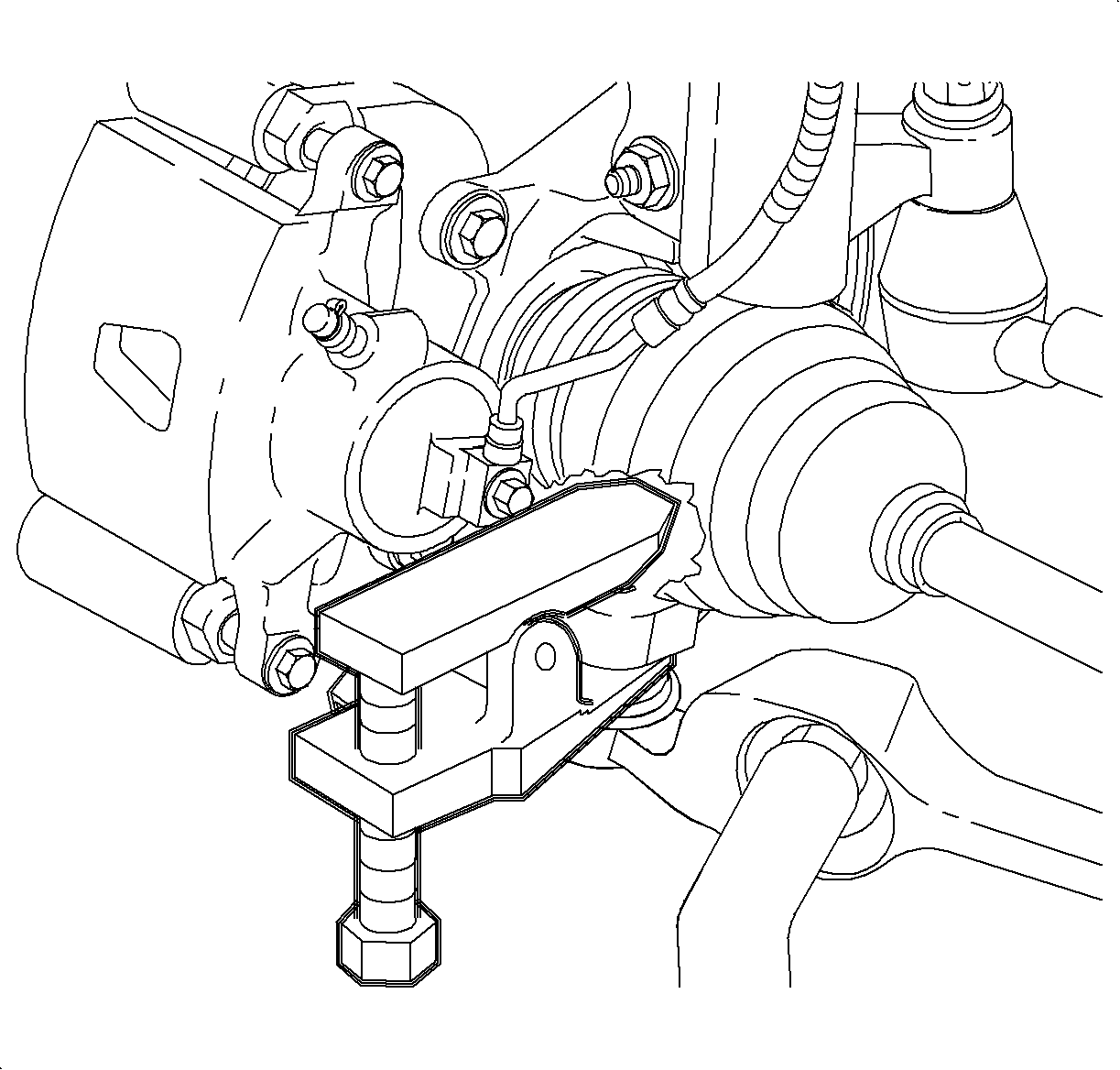
Notice: Do not attempt to separate the joint using a wedge-type tool because seal may be damaged.
Notice: Care must be taken to prevent damage to the speed sensor ring on ABS vehicles. Minor surface damage to the speed sensor ring can result in ABS system malfunctions.
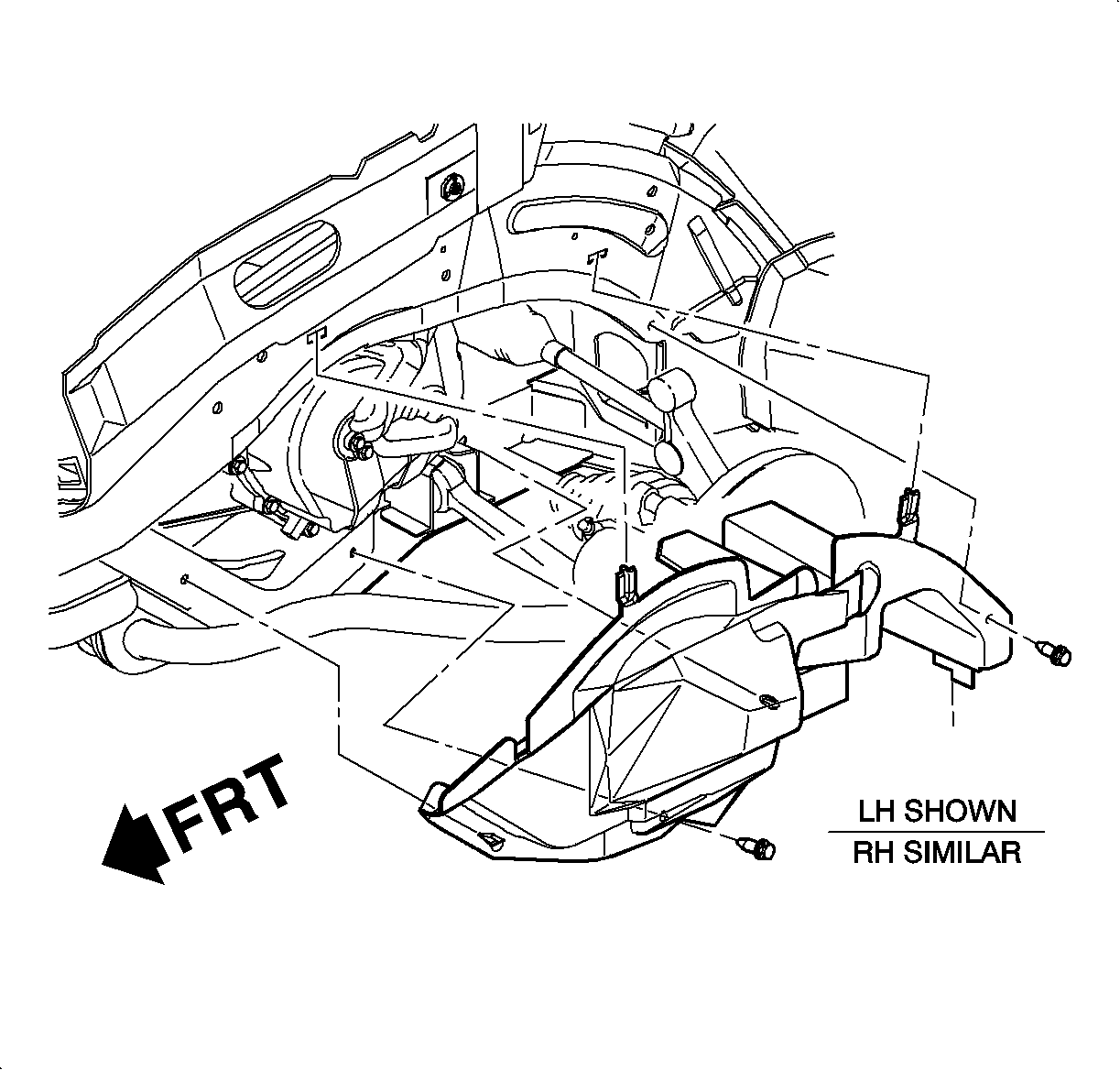
Important: Remove the front section of the splash shield first, then the rear.
| 7.1. | Remove the 2 push pins. |
| Important: If the molded-in fasteners are damaged or broken, drill out with a 5/16-in. bit and replace with a push pin. |
| 7.2. | Remove the lower shield to cradle the molded-in fasteners at the cradle by gently prying at the 3 fastener locations. |
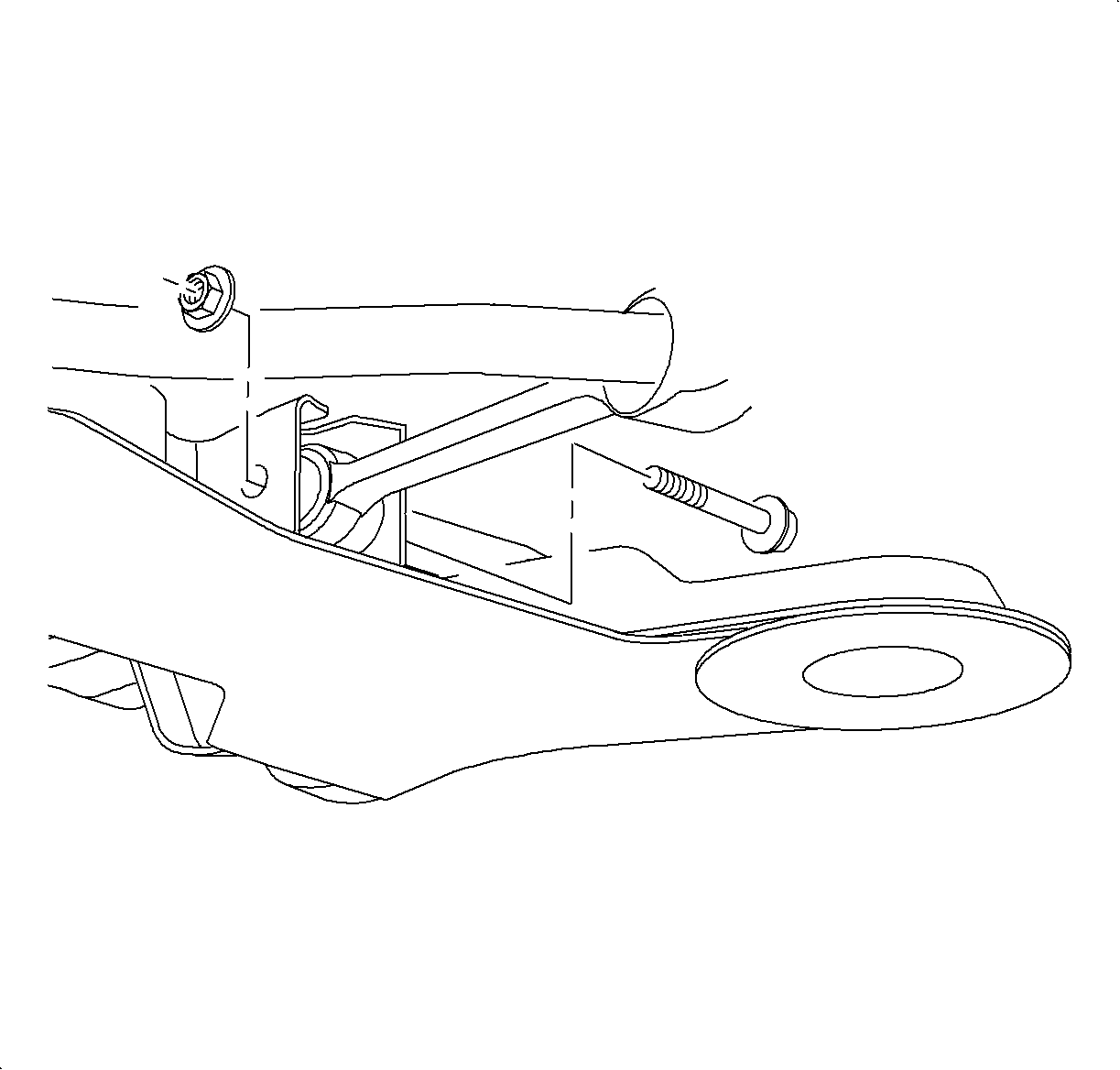
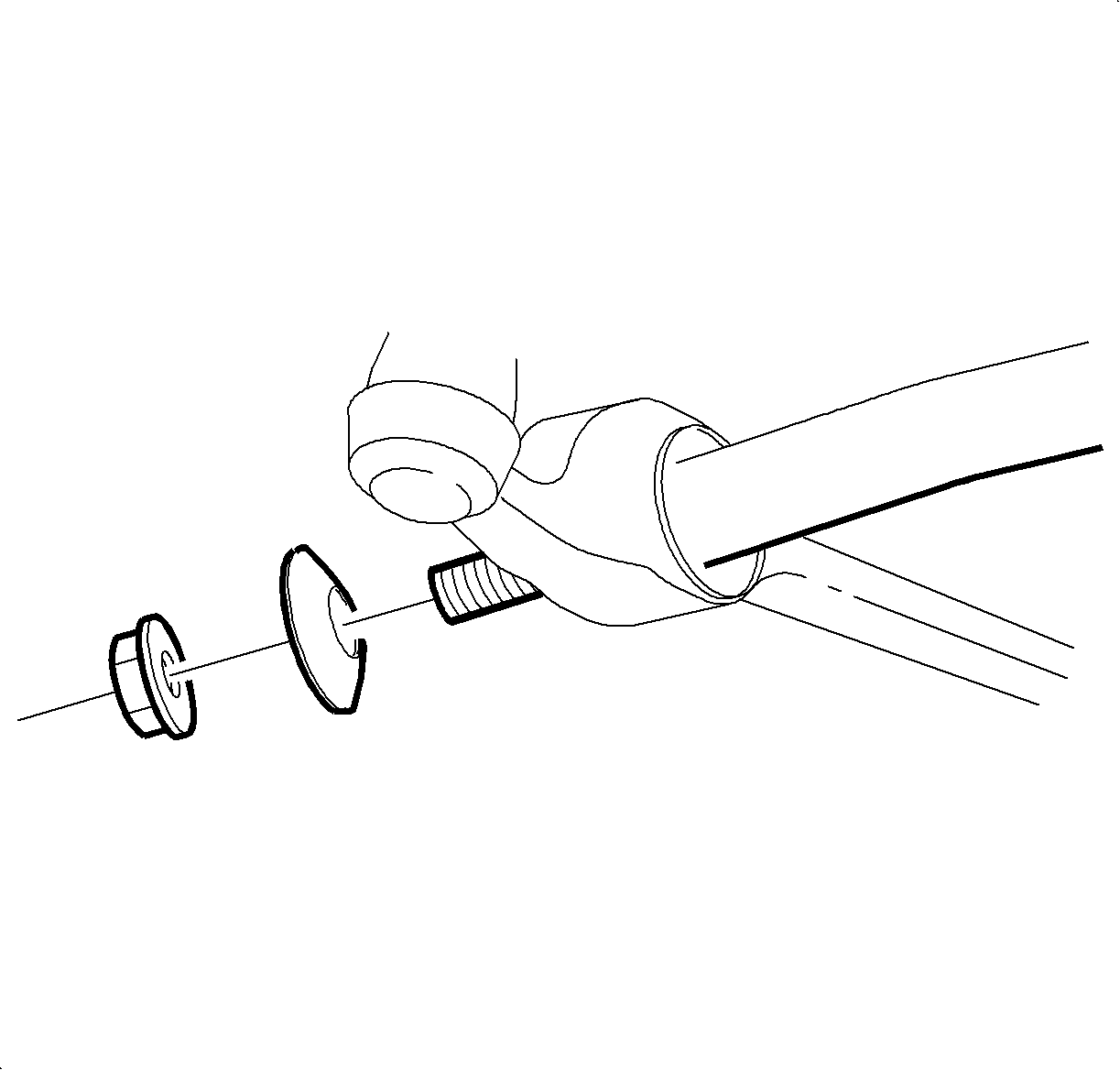
Important: The front wheels should be turned to the left to allow access to the nut.
Important: If the front stabilizer-to-cradle strut nut becomes damaged due to corrosion, cross-threading, etc., or is broken loose from the cradle, it can be replaced using the following procedure:
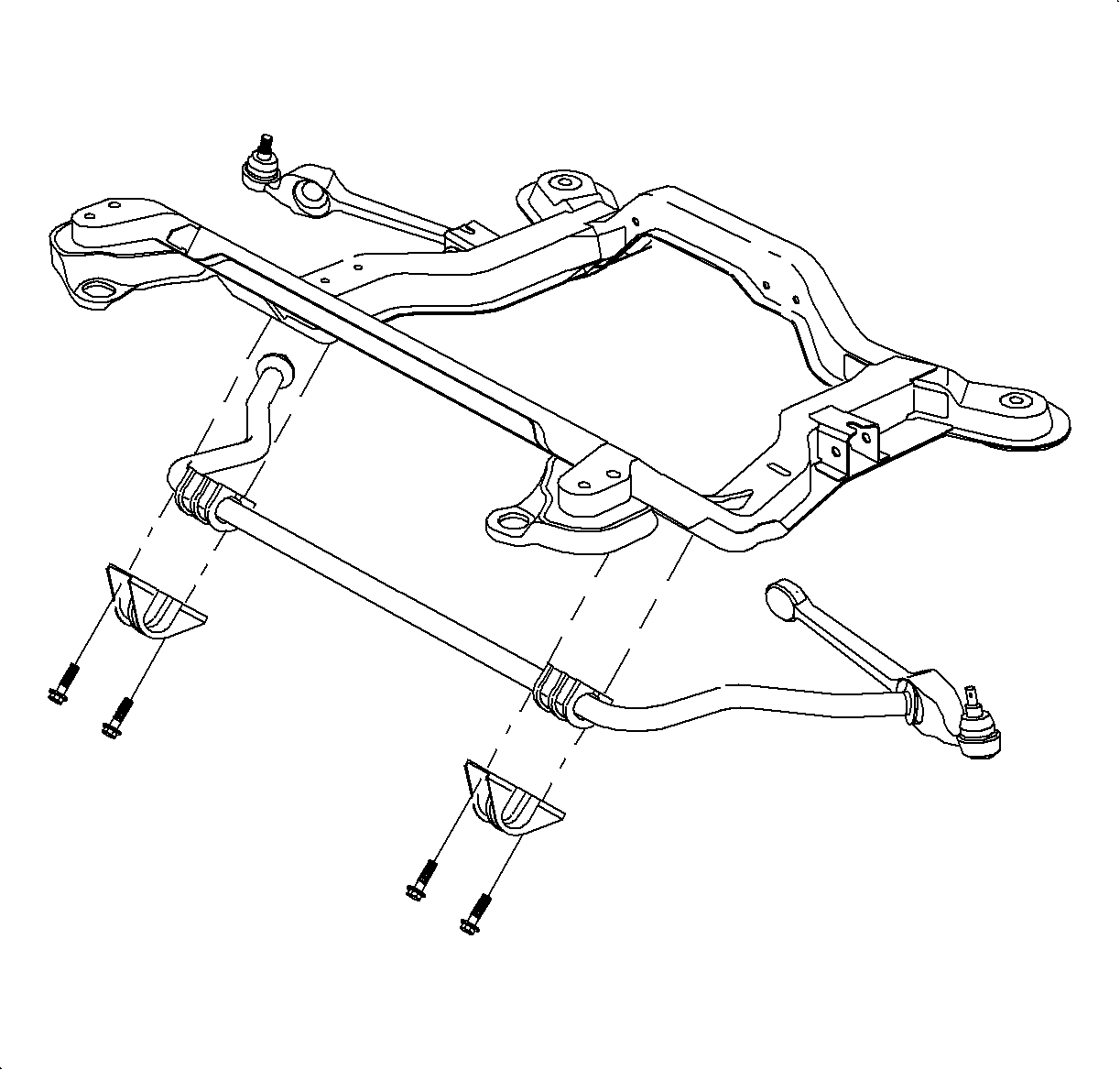
| • | If the nut is broken loose from the cradle and the bolt is locked in the nut, proceed to steps 10.3, 10.4, and 10.5. |
| • | If nut is not broken loose from cradle, but is damaged and the bolt is removed: |
| 10.1. | Distort the threads of the service bolt sufficiently to cause the bolt to lock into the nut. |
| 10.2. | Install the bolt, and using an air impact wrench, continue turning the bolt until the nut is broken loose from the cradle. |
| 10.3. | Cut off the bolt head. |
| 10.4. | Retrieve the bolt shank and nut from the cradle cavity. |
| 10.5. | Install the new bolt (P/N 21010823) and repair the nut (P/N 21006321). |
Installation Procedure
Important: The front stabilizer shaft can be installed UPSIDE DOWN. All front stabilizer shafts are marked with paint on the right hand side. Make sure this paint mark end is installed into the right control arm. If the paint mark is not visible, make sure the front stabilizer shaft turns upward between the attachment brackets.
(1) Proper Installation. (2) Improper Installation.- With the front stabilizer shaft off of vehicle, position the left control arm onto the front stabilizer shaft with the washer and nut.
- Install the front stabilizer shaft-to-cradle bushings onto the front stabilizer shaft.
- Position the right end of front stabilizer shaft into the right control arm (on vehicle).
- Position the left control arm into the frame.
- Install the front stabilizer shaft attachment brackets to the frame with the fasteners and tighten.
- Tighten the front stabilizer shaft-to-cradle fasteners a second time.
- Install the left road wheel onto the vehicle.
- With the aid of an assistant, push the bottom of the left road wheel into the vehicle. This will move the left control arm into a position that will allow the control arm to cradle the fastener to be installed.
- Install the left lower control arm-to-frame fastener.
- Install the right control arm-to-front stabilizer shaft nut and washer and tighten to specification.
- Tighten the control arm-to-front stabilizer shaft nut to specification.
- For the left side of vehicle, connect the ball stud to the steering knuckle with the fastener.
- Install the new cotter pin.
- Install the left side splash shield.
- Install the tabs in the body cut-out.
- Align the molded-in shield fasteners with the holes in the cradle. Push straight in to install.
- Install the push pins.
- Position the wheel onto hub.
- Install the wheel nuts and tighten in a crisscross pattern. Repeat the tightening pattern to make sure the torque is correct.
- Lower the vehicle from the hoist.
- Perform a vehicle wheel alignment. Refer to Wheel Alignment Specifications
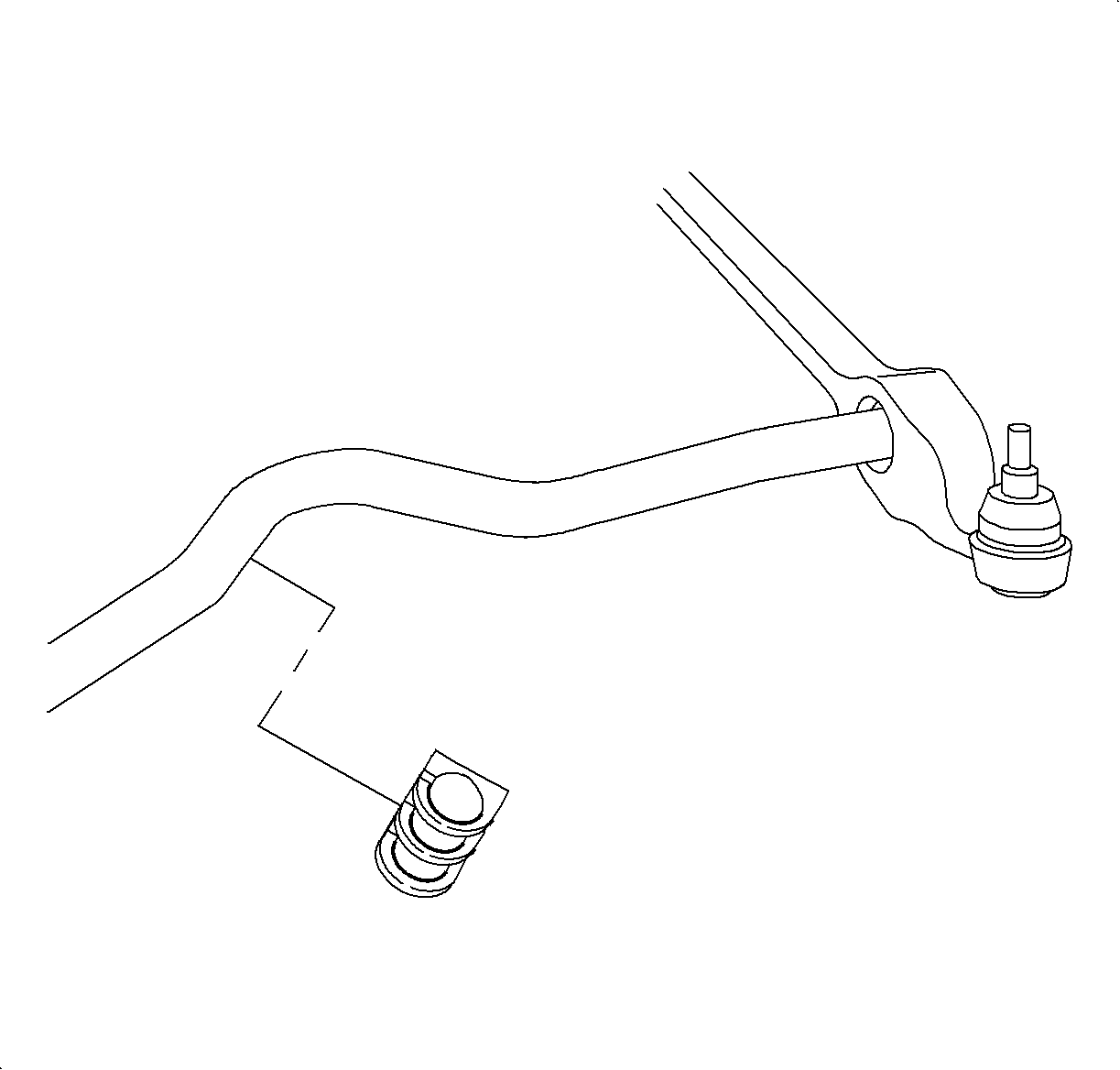
Important: Do not tighten the fasteners at this time.
Important: The front stabilizer shaft-to-cradle bushings must be positioned in the attachment brackets with their installation slits facing toward the front of the vehicle.
Important: Do not install the fasteners at this time.
Notice: Refer to Fastener Notice in the Preface section.

Important: New bolts or Loctite 242® (or equivalent), must be installed.
Tighten
Tighten the Front Stabilizer Shaft Attachment Bracket-to-Frame to 140 N·m
to (103 lb ft).
Tighten
Tighten the Front Stabilizer Shaft Attachment Bracket-to-Frame to 140 N·m
(103 lb ft).

Important: Tighten the wheel fasteners, but do not torque at this time.

Tighten
Tighten the Control Arm-to-Frame Bolt to 125 N·m (92 lb ft).
Tighten
Tighten the Control Arm-to-Frame Nut to 100 N·m (74 lb ft).

Important: Use new nut. Torque retention of the old nut may not be sufficient.
Tighten
Tighten the Control Arm-to-Front Stabilizer Shaft Nut to 144 N·m
(106 lb ft).
Important: Use new nut. Torque retention of old nut may not be sufficient.
Important: Lower control arm ball stud threads should be thoroughly cleaned and lubricated before tightening the nut.
Tighten
Tighten the Control Arm-to-Front Stabilizer Shaft Nut to 144 N·m
(106 lb ft).

Important: If necessary to rotate the castle nut to orient to hole in the stud, always tighten the nut -- never loosen it.
Tighten
Tighten the Ball Joint Stud Castle Nut to 75 N·m (55 lb ft).

Important: Install the rear section of the splash shield first, then the front.
Important: Make sure the splash shield flaps are tucked in at the body locations.
Notice: Before installing wheels, remove rust or corrosion from wheel mounting surfaces and brake rotors/drums. Failure to do so can cause wheel nuts to loosen in service.
Tighten
Tighten the Wheel Nuts to 140 N·m (103 lb ft).
